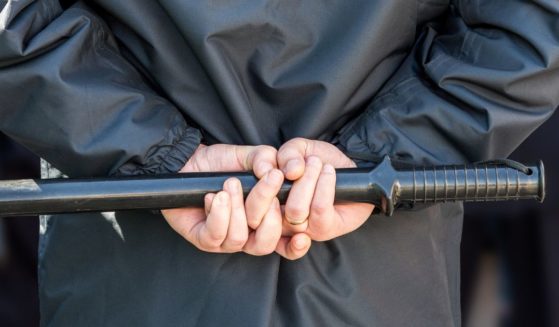Man Stumbles on 'Gold Find of the Century' Following Doctors Orders to Get Some Exercise
A Norwegian man with prior dreams of being an archaeologist fortuitously uncovered a cache of treasure while out on a walk — thanks to his doctor.
Erlend Bore, 51, got into the hobby of metal detecting after his doctor suggested he needed more exercise.
The U.K.’s Guardian reported the man was using the device last month on the southern Norwegian island of Rennesøy. As he was about to head home, he stumbled across something on the side of a hill after the metal detector alerted him.
He investigated the find and, at first, was convinced he had found something akin to fool’s gold.
“At first I thought it was chocolate coins or Captain Sabertooth coins,” he said, referring to the fictional Norwegian pirate. “It was totally unreal.”
Instead, Bore had found priceless artifacts that are believed to date back as far as the year 500 AD.
In all, archaeologists he contacted found nine gold medallions, gold pearls that were once part of an opulent necklace and three gold rings.
Archaeological find of the century in Stavanger region in Norway! https://t.co/PvEYcWykQa @StvAftenblad pic.twitter.com/TCxAsB1he4
— Arkeologisk museum (@ArkmuseumUiS) September 7, 2023
The medallions featured a horse associated with Norse mythology.
Jewels were also buried on the hillside.
According to archaeologists, the find is historic and was part of a high society necklace.
The head of the University of Stavanger’s Museum of Archaeology, a man named Ole Madsen, described Bore’s discovery as “the gold find of the century in Norway.”
“To find that much gold all at once is extremely unusual,” he said.
Another professor with the museum named Håkon Reiersen offered a pair of theories in regard to why the remnants of such a valuable piece of jewelry would be buried on a hillside and forgotten for at least 1,500 years.
“Given the location of the discovery and what we know from other similar finds, this is probably a matter of either hidden valuables or an offering to the gods during dramatic times,” Reiersen said.
Reiersen added that in the country “no similar discovery has been made since the 19th century, and it is also a very unusual discovery in a Scandinavian context.”
Bore will not be able to keep anything from his metal-detecting excursion due to laws about finding artifacts from before the year 1537.
But he and the owner of the land where the necklace was buried will both receive an undisclosed reward.
Truth and Accuracy
We are committed to truth and accuracy in all of our journalism. Read our editorial standards.
Advertise with The Western Journal and reach millions of highly engaged readers, while supporting our work. Advertise Today.












